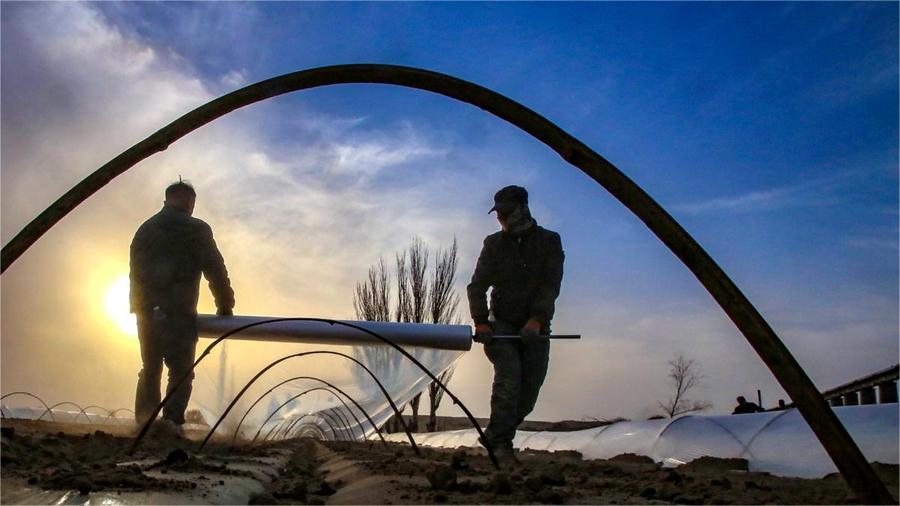Rural museums gain popularity amid rural revitalization
HAIKOU, March 30 (Xinhua) -- Wang Zhenzhong, owner of a rural museum in a fishing village in south China's island province of Hainan, gets busier over the past couple of years due to more visitors, especially during the Boao Forum for Asia (BFA) annual conference.
A descendant of fishermen, Wang has collected old stuff passed down by his family, such as nautical charts and compasses, and opened a museum near the venue of BFA in honor of his father and grandfather, who both had traveled across the South China Sea.
"The nautical charts I inherited contain the stories of our ancestors fighting the wind and waves in the South China Sea and is listed as a national-level intangible cultural heritage," said Wang, who also serves as the docent of the museum located in Paigang Village.
Despite it being small, Wang's museum has attracted visitors from across the country for its unique exhibits and the culture it preserves.
With old photos and veteran fishermen telling stories, the museum has offered tourists a place to learn and think about the local culture and the toughness and courage of the fishermen, said Du Yaping, a visitor from Hangzhou City of east China's Zhejiang Province.
The museum run by Wang is one of the rural museums featuring local folk culture that have sprung up in China in recent years.
Museums are usually associated with gigantic buildings, eye-catching spotlights and a massive number of collections in bustling downtown areas. However, many museums demonstrating the unique local culture can now be found in China's vast rural areas.
Located near a wide stretch of cornfields in Xinjia Village is a museum focusing on Mahu Opera, a traditional art of the Manchu ethnic group in northeast China's Jilin Province.
Developed on a site formerly used as a primary school, this museum has five exhibition rooms with nearly 2,000 objects on display, including manuscripts, masks, costumes, instruments and books, most of which were donated by Wang Songlin, a local inheritor of intangible cultural heritage.
"By exhibiting them in the village, I hope to let more people know about this fading ancient form of art originating in the region, while also helping boost the aesthetic interest of more farmers," said Wang.
In 2021, China started to develop Jilin, Zhejiang and Shandong into pilot provinces for constructing rural museums.
East China's Zhejiang Province issued a guideline for the construction of rural museums in April 2022. It provides standards for rural museum construction, operation and management, and also calls for cultural heritage administrative departments and state-owned museums to strengthen management and support for the construction of rural museums.
According to the guideline, Zhejiang plans to build 1,000 rural museums from 2021 to 2025. As of Sept. 30, 2023, a total of 692 rural museums had been built in the province, said the provincial cultural heritage administration.
While modernizing its rural regions, China is also seeking solutions to preserve the distinct history and vibrant culture of different regions, with the building of rural museums being an important part of this strategy.
Rural museums can effectively explore and inherit rural culture. With the development of the tourism market in China, museums with distinctive exhibits will increasingly be included in tourists' itineraries, said Ma Chao, an associate professor from Hainan Normal University.
Photos
Related Stories
- Profile: Writer-turned-lawmaker's pursuit for better rural China
- Village in Hainan explores new developing model to advance rural revitalization
- Young Chinese contribute to rural revitalization
- New types of farmers help spur rural vitalization
- China's rural policy bank to increase financial support for rural revitalization
- Back to countryside, new trend amid China's rural revitalization drive
- Utilization of straws drives rural revitalization, economically and ecologically
- "Village galas" proving a driving force in rural revitalization
- Explainer: How will China promote rural revitalization?
- No 1 Central Document details rural vitalization strategy
Copyright © 2024 People's Daily Online. All Rights Reserved.









